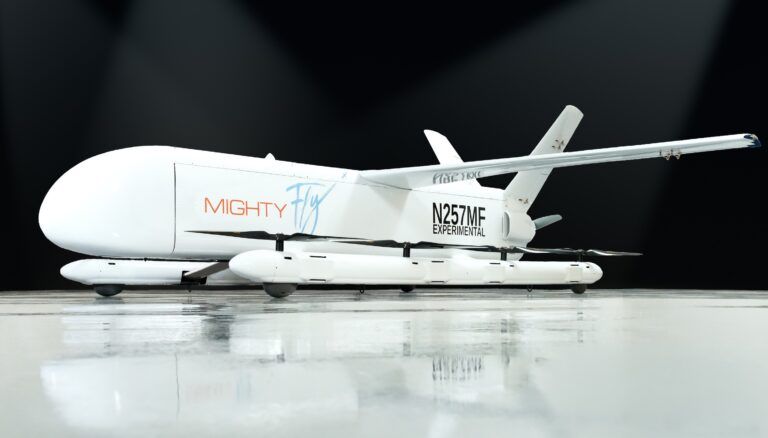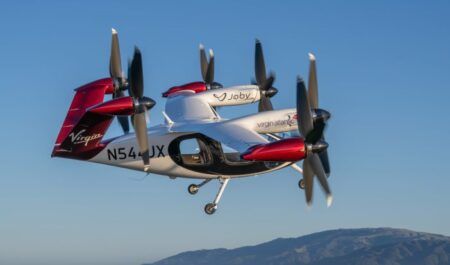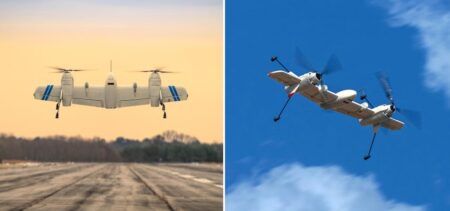San Francisco, California-based startup MightyFly is flight testing its autonomous cargo drone at longer ranges after receiving authorization from the USA’s Federal Aviation Administration.
MightyFly is developing a hybrid-electric autonomous cargo drone capable of Beyond Visual Line of Sight (BVLOS) operation and a range of up to 600 miles (965km).
The company, which also this month revealed an updated build of its drone called the Cento, was founded in 2019 and flew the first version of its drone the CF-100 nine months ago.
The Cento uses electric vertical lift fans, one forward propulsion propeller and a high-wing carbon fiber airframe design. It has a cargo capacity of 100 lbs (45kg) and a maximum speed of 150mph (240 km/hr).
Fully loaded, the Cento weighs 355 lbs (161kg). It measures 13.1ft by 16.7 ft (4m by 5m) – around the size of two small cars – and features a 6ft by 1ft by 1ft (1.8 m by 0.30m by 0.30m) internal cargo bay that can carry around 96 small packages.
The Cento’s hybrid powertrain uses an internal combustion engine to recharge the aircraft’s battery while in the air, enabling it to perform multiple consecutive deliveries and removing the need to recharge the drone between flights, says MightyFly.
The Federal Aviation Administration (FAA) has granted a Special Airworthiness Certificate and a Certificate of Authorization (COA) allowing the Cento to conduct long-range flights. The larger airspace means MightyFly can flight test the aircraft in a larger airspace of up to 230 square miles and test the transition from hover to forward flight at medium and high altitudes at up to 5,000ft.
MightyFly has also been granted a Small Business Innovation Research award by the US Air Force to develop a version of the Cento for military applications.
Manal Habib, MightyFly CEO and co-founder said, “The traditional hub-and-spoke distribution model[for logistics] doesn’t serve everyone.
“We need to be able to adapt to various cargo volumes and expedited timing. Medical companies, just-in-time manufacturing, and retailers that now provide same-day delivery need a faster and more affordable way to get their goods and perishables to the final destination.”





